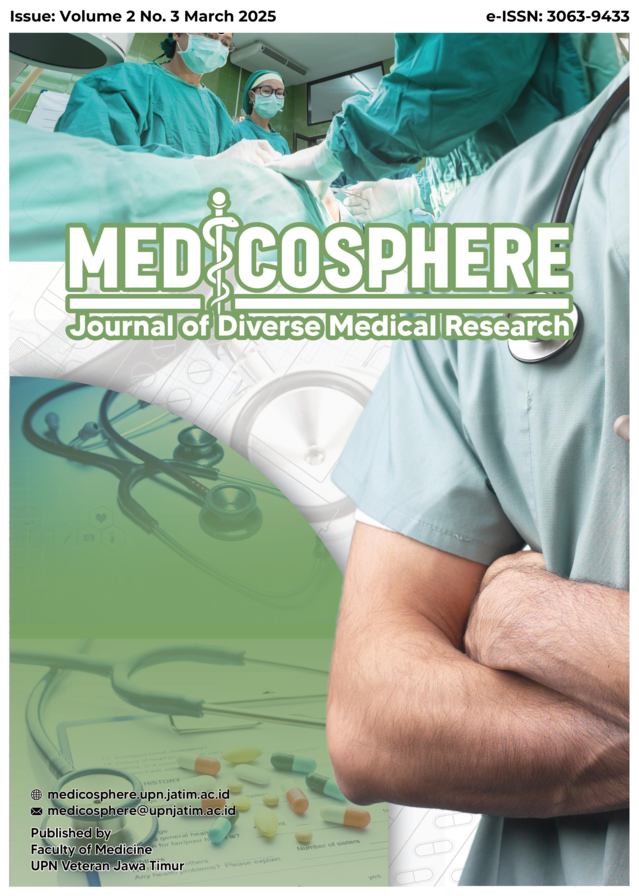Analysis of Risk Factors for Typhoid Fever Cases in Flood-Prone Areas
A Literature Review
DOI:
https://doi.org/10.33005/jdiversemedres.v2i3.84Keywords:
flood, risk factors, typhoid feverAbstract
Background: Indonesia, a country experiencing severe drought, is highly susceptible to
waterborne diseases, such as typhoid fever caused by Salmonella typhi infection. Poor
sanitation conditions and high water levels can exacerbate the drought situation and create a
conducive environment for waterborne diseases. Understanding the risk factors associated with
typhoid fever in drought-prone areas is critical for effective intervention and management.
Objectives: This study aimed to analyze the risk factors associated with increased incidence
of typhoid fever in flood-prone areas.Method: This study used the literature review method by
collecting data from various sources published between 2018 and 2024, through the Google
Scholar and Mendeley platforms. The keywords used in the search were “flood,” “typhoid
fever,” and “risk factors. ”Results and Discussion: The analysis revealed that poor sanitary
conditions and high levels of air pollution are the main risks contributing to typhoid disease.
Unhealthy environments and inadequate public access in remote areas increase the risk of
transmission. Education on personal hygiene and health awareness is essential to prevent
typhoid disease, especially in areas with minimal health infrastructure.Conclusion: he main
risk factors for typhoid fever in flood-prone areas are poor sanitation and limited access to
clean water. Community education efforts on hygiene and sanitation should be conducted to
prevent a surge in typhoid fever cases and protect overall public health.
Downloads
Downloads
Published
How to Cite
Issue
Section
License
Copyright (c) 2025 Journal of Diverse Medical Research: Medicosphere

This work is licensed under a Creative Commons Attribution-NonCommercial-ShareAlike 4.0 International License.






